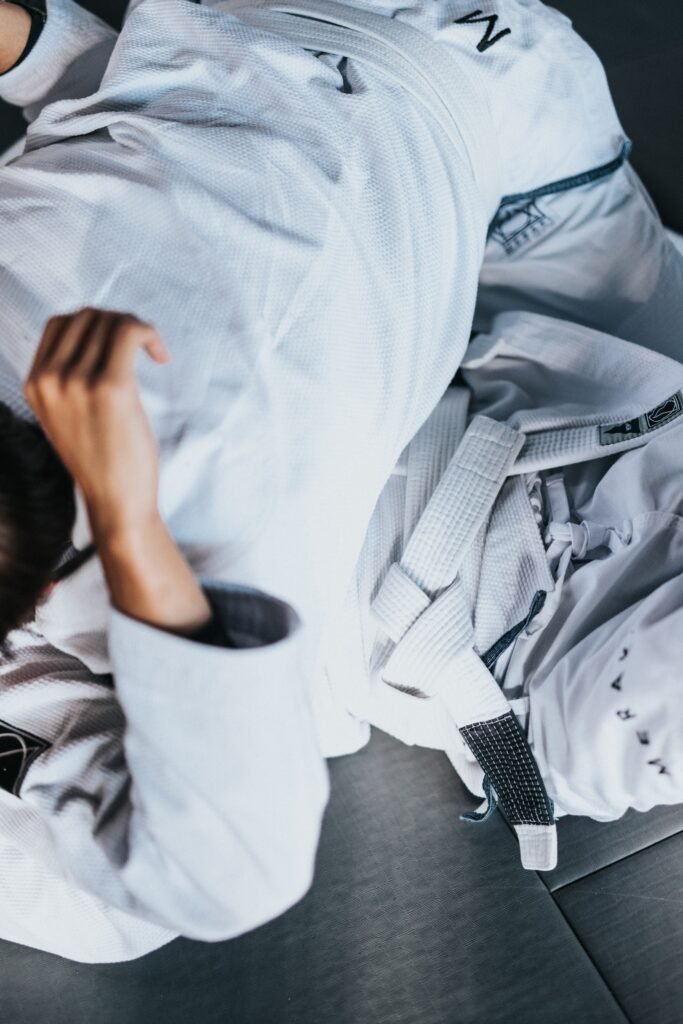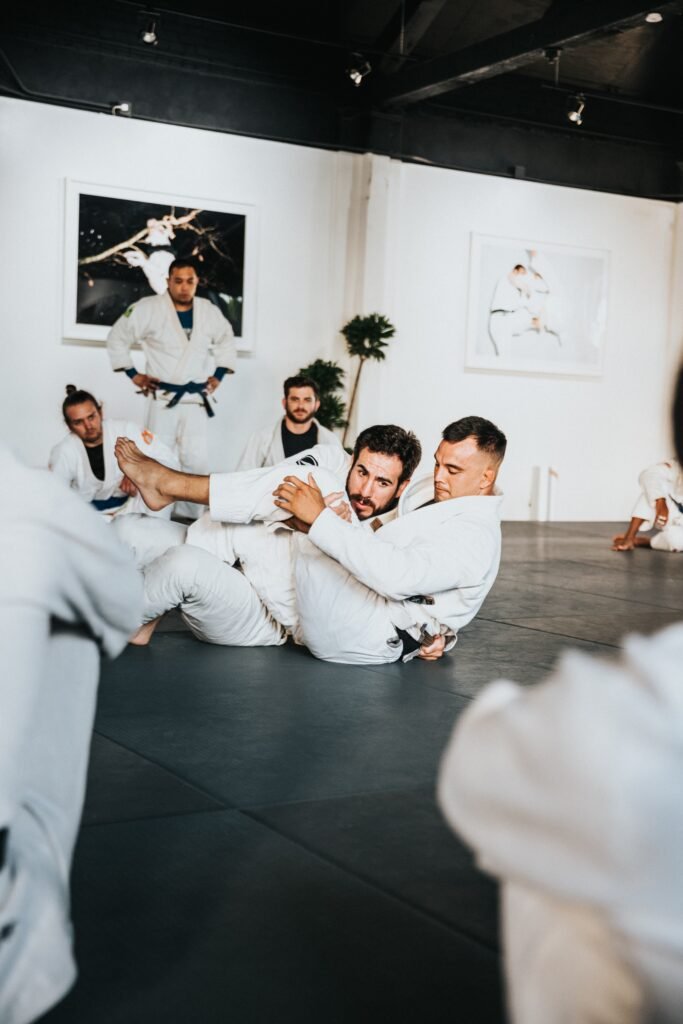Looking to learn martial arts but unsure about the cost? Look no further! In this article, we will explore the pricing of martial arts classes and provide you with the information you need to make an informed decision. Whether you're interested in modern Korean style martial arts or looking to improve your self-defense skills, we have got you covered. Don't miss out on this opportunity to enhance your physical and mental strength while gaining greater confidence. Visit us today for the best martial arts experience near you, and let's embark on this exciting journey together!
Types of Martial Arts Classes
Traditional Martial Arts
traditional martial arts classes focus on teaching ancient techniques and spiritual values that have been passed down through generations. These classes often incorporate discipline and respect, as well as forms, katas, and weapon training. Traditional martial arts styles include karate, kung fu, and taekwondo.
Mixed Martial Arts (MMA)
MMA classes combine various techniques and martial arts styles such as boxing, Brazilian jiu-jitsu, kickboxing, and wrestling. These classes focus on teaching effective techniques for both striking and grappling, allowing students to develop a well-rounded skill set for self-defense and competition.
Muay Thai
Muay Thai, also known as "The Art of Eight Limbs," is a popular martial art from Thailand. Muay Thai classes teach striking techniques using fists, elbows, knees, and shins. Students learn to generate power and improve their conditioning through pad work, bag training, and sparring.
Brazilian Jiu-Jitsu (BJJ)
BJJ classes concentrate on ground fighting and submission techniques. Students learn how to control opponents through joint locks, chokes, and leverage, making it an effective martial art for self-defense. BJJ emphasizes technique and timing, allowing smaller individuals to effectively defend themselves against larger opponents.
Krav Maga
Krav Maga is a self-defense system that originated in Israel. Krav Maga classes focus on practical, real-life scenarios and teach techniques for quickly disabling attackers. This martial art emphasizes aggression, efficiency, and simultaneous defensive and offensive movements.
Taekwondo
Taekwondo is a Korean martial art that emphasizes high kicks and fast-paced movements. Taekwondo classes often include forms, full-contact sparring, and board breaking. In addition to physical techniques, Taekwondo also promotes discipline, confidence, and respect.
Karate
Karate classes originated in Okinawa, Japan, and emphasize striking techniques using punches, kicks, and knee strikes. Karate training includes katas, sparring, and self-defense techniques. It focuses on developing character, self-discipline, and perseverance.
Kung Fu
Kung Fu, originating from China, is a wide-ranging term that encompasses various martial arts styles. Kung Fu classes teach a combination of striking techniques, joint locks, and animal-inspired movements. Students learn to develop fluidity, balance, and internal energy.
Boxing
Boxing is a combat sport that focuses on punches, footwork, and head movement. Boxing classes include bag work, pad drills, and sparring. These classes improve cardiovascular fitness, coordination, and sharpen boxing techniques.
Capoeira
Capoeira is a Brazilian martial art that combines acrobatics, dance, and music. Capoeira classes incorporate kicks, sweeps, and cartwheels into a rhythmic game-like practice. This martial art emphasizes quick reflexes, body control, and musicality.
Factors Affecting the Cost of Martial Arts Classes
Location
The cost of martial arts classes can vary depending on the location. Classes offered in metropolitan areas tend to be more expensive compared to those in suburban or rural areas. This is due to higher operating costs, such as rent, utilities, and taxes.
Instructor’s Qualifications
The qualifications and experience of the instructor can also affect the cost of martial arts classes. Instructors with higher rankings, extensive competition experience, or specialized training may charge higher fees. Their expertise and reputation can be worth the investment for students seeking top-notch instruction.
Class Duration and Frequency
The duration and frequency of the classes can impact the cost. Longer class durations or classes offered multiple times per week generally result in higher fees. These classes may provide more training time and opportunities to practice techniques, which can accelerate skill development.
Facilities and Equipment
The quality and availability of facilities and equipment can influence the cost of martial arts classes. Martial arts schools with well-maintained training spaces, adequate equipment, and amenities may charge more to cover these expenses. High-end facilities may also offer additional benefits such as locker rooms, showers, or conditioning areas.
Class Size
The size of the class can affect the cost of martial arts classes. Smaller class sizes may offer more individualized attention from the instructor, allowing for personalized feedback and corrections. However, smaller classes often come with a higher price tag since the instructor's time is divided among fewer students.
Level of Expertise
Martial arts classes that cater to different skill levels can have varying costs. Beginner classes may be more affordable as they focus on foundational techniques, while advanced classes may involve specialized training and advanced techniques, resulting in higher fees.
Additional Training Programs
Some martial arts schools offer additional training programs, such as self-defense seminars, weapon training, or advanced competition training. Participating in these programs may incur additional costs beyond regular class fees. These programs provide an opportunity to further develop skills or explore different aspects of martial arts.
Membership Options
Martial arts schools may offer various membership options, such as monthly, quarterly, or annual memberships. Longer-term memberships often come with discounted rates compared to pay-per-class options. Students committed to long-term training can benefit from cost savings by selecting a membership that suits their training frequency.
Promotions and Discounts
Martial arts schools occasionally offer promotions or discounts, especially for new students or special occasions. These promotions can include discounted trial classes, free equipment, or reduced rates for a specific period. Students should keep an eye out for these opportunities to save on the cost of martial arts classes.
Cost of Uniform and Equipment
Martial arts uniforms, belts, and equipment can add to the overall cost of training. Some schools include the cost of the uniform in their registration fees, while others require students to purchase them separately. Additionally, certain martial arts may require specialized equipment like gloves, shin guards, or weapons, which can impact the total cost.

Average Cost of Martial Arts Classes
The average cost of martial arts classes can vary significantly depending on the factors mentioned above. On average, monthly fees for martial arts classes range from $80 to $250, with some schools charging even higher rates. This cost generally includes a specific number of classes per week, and additional fees may apply for specialized programs, testing, or equipment.
To determine the precise cost, it is essential to research and visit local martial arts schools to inquire about their specific pricing. It is advisable to consider factors such as location, instructor qualifications, class frequency, and additional program costs to make an informed decision.
Cost Comparison Across Different Types of Martial Arts
The cost of martial arts classes can also differ depending on the type of martial art being taught. Some martial arts may require more specialized equipment or have higher instructor qualifications, impacting the overall cost. Here is a general cost comparison across different types of martial arts:
- Traditional Martial Arts (e.g., karate, kung fu, taekwondo): $80 to $150 per month on average.
- Mixed Martial Arts (MMA): $100 to $250 per month on average.
- Muay Thai: $100 to $200 per month on average.
- Brazilian Jiu-Jitsu (BJJ): $100 to $200 per month on average.
- Krav Maga: $100 to $200 per month on average.
- Boxing: $80 to $150 per month on average.
- Capoeira: $80 to $150 per month on average.
These are approximate ranges, and some schools may charge higher or lower fees based on the factors mentioned earlier. It is crucial to research and compare prices to find the best fit for individual budgets and goals.

Affordable Options for Martial Arts Classes
For individuals seeking more affordable options for martial arts classes, several alternatives can help reduce costs without compromising the quality of training. Some affordable options include:
Community Centers and Recreation Centers
Community centers and recreation centers often offer martial arts classes at lower prices compared to private martial arts schools. These classes are usually conducted by qualified instructors and can be a cost-effective way to learn martial arts.
Non-Profit Organizations
Non-profit organizations or community-based programs may provide martial arts classes at subsidized rates or offer scholarships for individuals with financial constraints. These programs aim to make martial arts accessible to a wider audience and promote physical fitness and personal development within the community.
Student Discounts
Many martial arts schools offer discounted rates or special packages for students. Students can take advantage of these discounts by providing valid student identification. This option allows students to pursue their martial arts training while also managing their expenses.
Family Discounts
Families with multiple members interested in martial arts can benefit from family discounts offered by some schools. These discounts typically apply to additional family members joining the same school and can significantly lower overall costs.
Group Classes
Some martial arts schools offer group classes that can lower the individual cost per class. Group classes allow students to train alongside others, fostering a sense of camaraderie while sharing the cost among multiple participants.
By exploring these affordable options, individuals can find martial arts classes that fit their budgets and still offer high-quality training and instruction.
Additional Costs Related to Martial Arts Classes
Apart from the regular class fees, there may be additional costs associated with martial arts training. These costs can vary depending on the individual's goals and level of involvement in the martial arts community. Some common additional costs include:
Testing and Belt Fees
In martial arts that utilize a belt ranking system, there may be fees associated with belt tests and advancements. These fees cover administrative costs and the evaluation of technical proficiency before students can progress to the next belt rank.
Competition and Seminar Fees
Participating in martial arts competitions or attending seminars conducted by renowned instructors may involve additional fees. These events provide opportunities for skill development, exposure to different training methods, and networking within the martial arts community.
Private Lessons
Individuals seeking personalized attention or specific training can opt for private lessons. Private lessons offer one-on-one instruction tailored to the student's needs and goals but may come at a higher cost compared to group classes.
Special Events and Workshops
Special events, workshops, or camps organized by martial arts schools or renowned instructors can provide immersive training experiences. These events often include intensive training sessions, guest instructors, and additional training materials. While they offer unique learning opportunities, they may entail additional expenses.
Travel Expenses
If students choose to participate in competitions, seminars, or workshops that require travel, they should consider additional expenses such as transportation, accommodation, and meals. These costs can significantly impact the overall budget for martial arts training.

Ways to Save Money on Martial Arts Classes
While martial arts classes can be a significant investment, there are several ways to save money without compromising the quality of training. Here are some strategies to consider:
Research and Compare Prices
Take the time to research and compare prices among different martial arts schools in your area. Look for schools that offer competitive rates while still maintaining a good reputation and quality instruction. It is advisable to visit the schools, observe classes, and speak with instructors to get a sense of their teaching styles and facility offerings.
Negotiate or Ask for Discounts
Inquire about potential discounts or negotiate fees with martial arts schools. Some schools may be willing to offer reduced rates for long-term commitments or provide discounts for students meeting specific criteria. It never hurts to ask and explore possible options for cost savings.
Join Group Classes
Opting for group classes instead of private lessons can significantly reduce costs. Group classes allow for learning from peers, practicing techniques with partners, and sharing expenses with fellow students. Students can benefit from the collective energy and motivation of training in a group setting.
Take Advantage of Trial Offers
Many martial arts schools offer trial classes or introductory packages at discounted rates. Take advantage of these offers to get a sense of the school's atmosphere, teaching style, and instructor-student interactions before committing to regular classes. This allows potential students to evaluate if the school meets their expectations and aligns with their training goals.
Consider Package Deals
Some martial arts schools offer package deals for long-term commitments. These packages often include multiple classes per week at a reduced per-class rate. Committing to a package deal can help significantly reduce the overall cost of martial arts training, especially for individuals dedicated to their practice.
Financial Aid and Scholarships
Explore financial aid options or scholarships offered by martial arts schools, non-profit organizations, or community-based programs. These opportunities may provide financial assistance or reduced fees for individuals demonstrating financial need or exceptional dedication to martial arts.
By implementing these strategies, individuals can make martial arts training more cost-effective without compromising the opportunities for skill development and personal growth.
Benefits of Martial Arts Classes
Participating in martial arts classes offers numerous benefits beyond physical fitness and self-defense skills. Here are some of the key advantages:
Physical Fitness and Health
Martial arts training involves full-body movement, cardiovascular conditioning, and muscle strength development. Regular training can improve flexibility, endurance, balance, and coordination. Engaging in martial arts classes is an effective way to enhance overall physical fitness and contribute to a healthy lifestyle.
Self-Defense Skills
Martial arts classes teach practical self-defense techniques that can empower individuals to protect themselves in potentially dangerous situations. Learning how to respond to real-life threats can boost self-confidence and provide individuals with the knowledge and skills to stay safe.
Improved Mental Focus and Discipline
Martial arts training requires mental focus, concentration, and discipline. Through repetition and practice, students learn to concentrate on specific techniques, block out distractions, and maintain mental clarity. These skills cultivated in martial arts classes can carry over to other aspects of life, such as work or academics.
Increased Confidence and Self-Esteem
Martial arts training promotes self-confidence and self-esteem. As students progress and master new techniques, they gain a sense of accomplishment and self-assurance in their abilities. Martial arts classes often involve goal setting and provide opportunities for personal growth, which further boosts confidence.
Stress Reduction and Emotional Well-being
Participating in martial arts classes can be an excellent way to reduce stress and improve emotional well-being. The physical activity and focus required during training help release endorphins, which elevate mood and reduce anxiety. Additionally, the supportive and positive environment of martial arts classes fosters a sense of community and camaraderie, promoting emotional well-being.
Social Interaction and Community
Martial arts classes provide opportunities for social interaction and community. Students often train alongside peers, forming relationships and bonds based on shared goals and experiences. The supportive environment of a martial arts community can create friendships and a sense of belonging.
Conclusion
Martial arts classes offer a wide range of training options, from traditional martial arts to mixed martial arts, each with its unique focus and benefits. The cost of martial arts classes can be influenced by factors such as location, instructor qualifications, class frequency, additional programs, and equipment costs.
While the average cost of martial arts classes can vary significantly, there are affordable options available, such as community centers, non-profit organizations, and student or family discounts. Awareness of additional costs related to testing, competitions, private lessons, and special events can help students plan their martial arts budget effectively.
Implementing strategies such as researching prices, negotiating fees, joining group classes, and taking advantage of trial offers can help individuals save money on martial arts classes. It is also important to consider the numerous benefits of martial arts classes, including physical fitness, self-defense skills, mental focus, confidence, stress reduction, and the sense of community.
By exploring the comprehensive range of martial arts classes available, individuals can find a training style that suits their interests and goals while managing their budget effectively. Whether seeking physical fitness, personal growth, or self-defense skills, martial arts classes provide a holistic approach to improving both body and mind.














